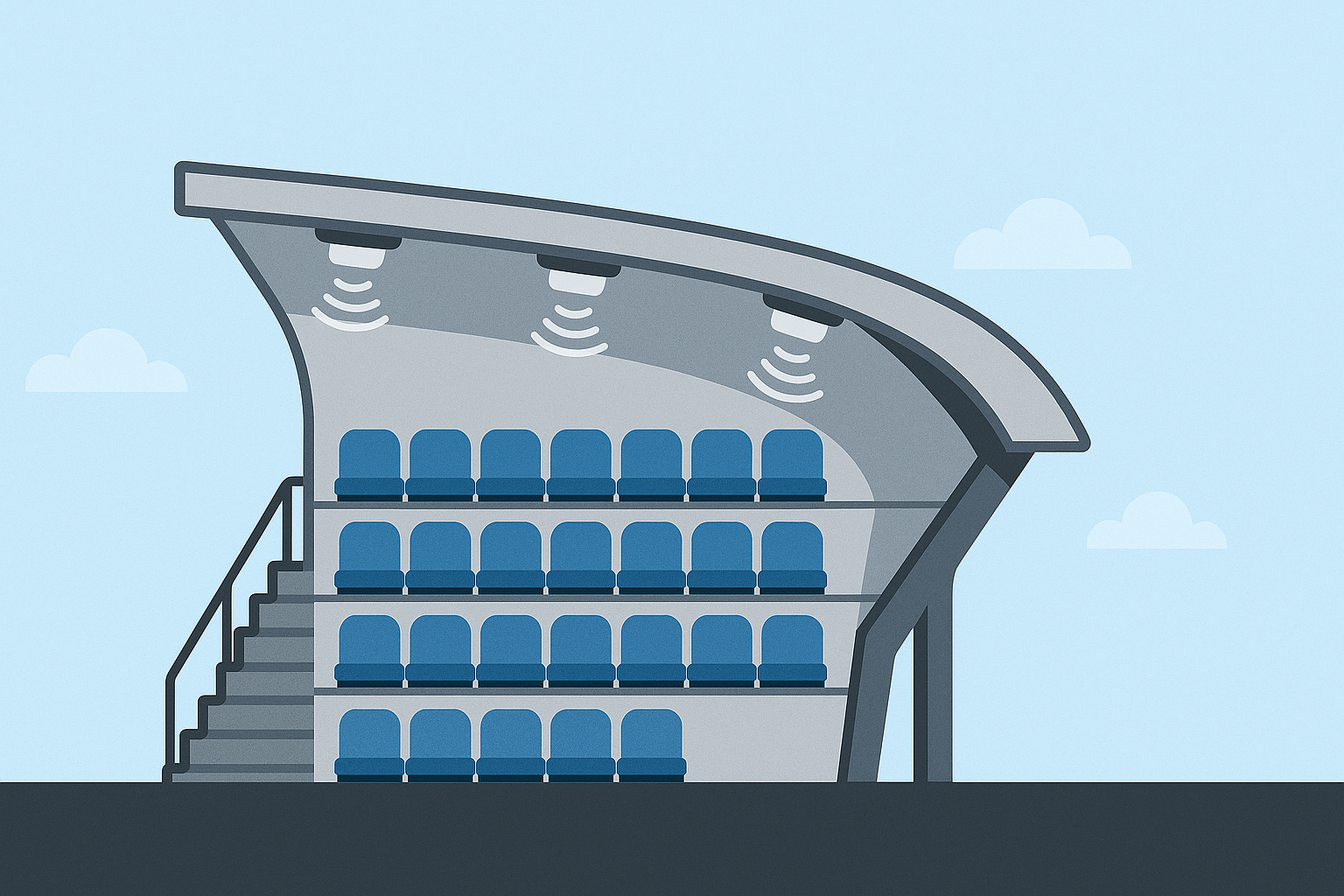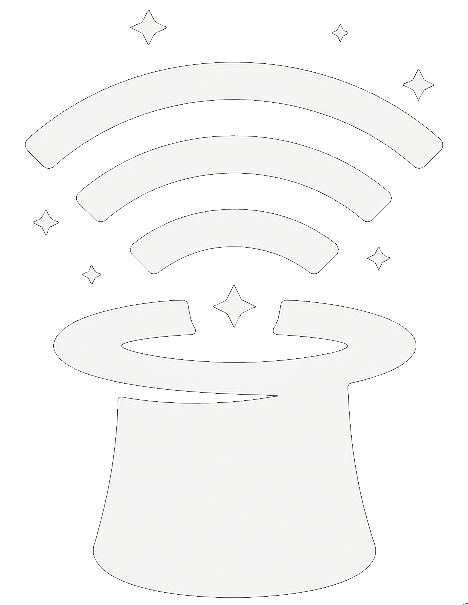
When it comes to stadium Wi-Fi, there’s no one-size-fits-all approach — but until recently, the consensus has leaned toward under-seat deployments as the gold standard. With better channel reuse, more predictable client distribution, and improved roaming performance, under-seat access points have led the way despite their high costs and complex installations.
Historically, stadium Wi-Fi designs have followed three main approaches:
- Overhead – Directional antennas mounted above the seating, pointing down.
- Side/Handrail – Access points mounted on railings or walls, aimed across seats.
- Under-seat – Enclosed APs mounted below seats, pointing upward.
Of these, the under-seat method has been preferred due to its performance in full-capacity scenarios. However, it does come with notable drawbacks: it’s costly, installation is invasive, and we often observe hight levels of co-channel contention when the stadium is sparsely occupied, as it relies on crowd density (body loss) to attenuate the signal
A New Challenger: Hyper-Directional Overhead Antennas
At Mobility Field Day, I was present when Fortinet unveiled a significant update: their acquisition of Everest Networks and the introduction of Everest’s hyper-directional antenna technology. Their bold claim? These antennas enable a new era of overhead Wi-Fi design — one that could rival or even surpass the performance of under-seat deployments.

This technology challenges long-standing design assumptions by promising:
- Strong, targeted coverage from overhead positions.
- Less dependency on crowd density for interference mitigation.
- Reduced installation complexity and cost compared to under-seat layouts.
According to a recent article from Stadium Tech Report, these hyper-directional antennas are already demonstrating real-world benefits — from increased network performance to new monetization opportunities through operational efficiencies (source).
But What About the Tech?
A valid concern raised during Mobility Field Day was whether Everest’s hardware is keeping up with industry standards. The last time many of us heard from them, they were still on 802.11ac Wave 2. However, new FCC filings suggest Everest is catching up with Wi-Fi 7-ready hardware:
Final Thoughts
While hyper-directional antennas offer an interesting new direction, especially in cost and deployment flexibility, it remains to be seen if they can consistently outperform under-seat configurations in every stadium scenario.
The real test will come as more venues deploy these systems, and we start seeing comparative performance data in both packed and lightly attended events.
As the discussion around stadium Wi-Fi design evolves, one thing is becoming increasingly clear: Fortinet’s acquisition of Everest Networks marks a significant step forward in this space. They are now a serious contender to consider for high-performance stadium Wi-Fi solutions.

